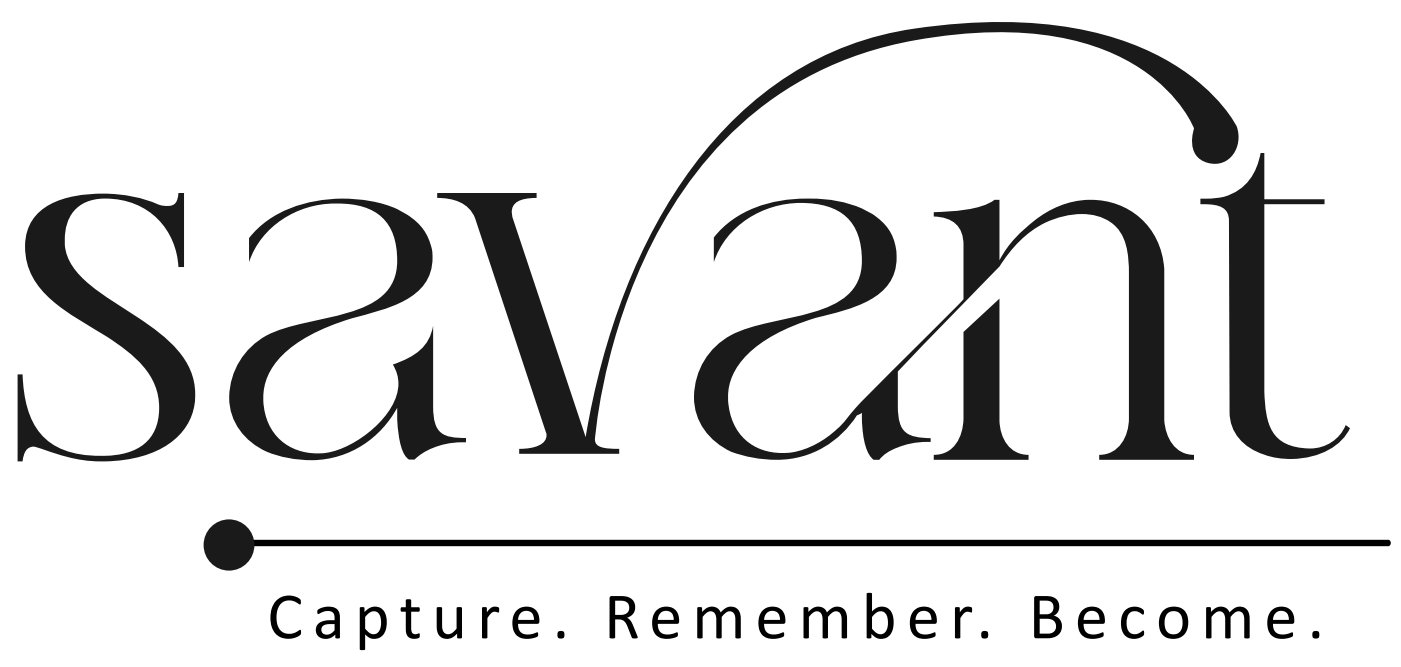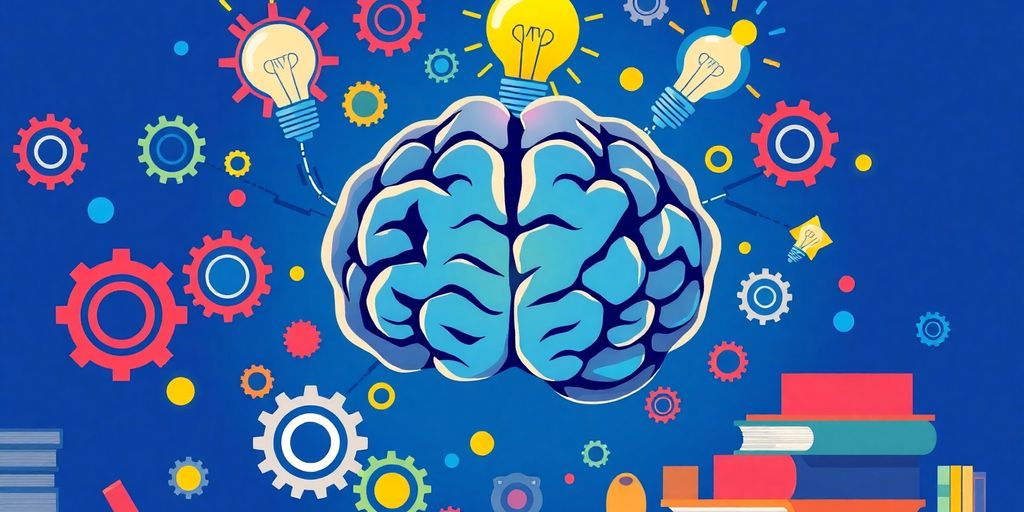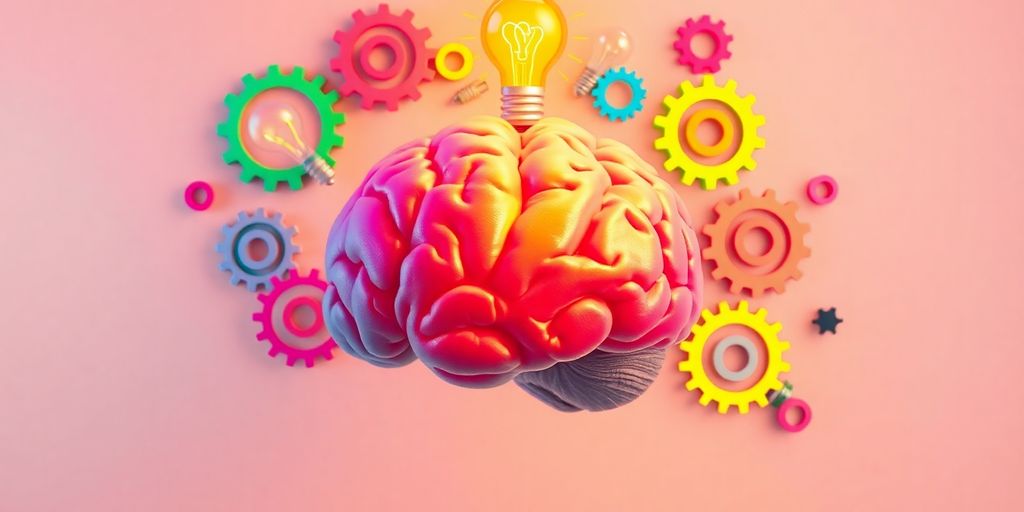Have you ever found yourself struggling to remember names, dates, or important information? You’re not alone. Many people face challenges with memory retention, but the good news is that there are effective techniques you can use to train your memory. In this article, we will explore ten practical methods that can help you improve your memory skills and retain information more effectively. Let’s dive in and discover how to train my memory for better retention!
Key Takeaways
- Memory can be improved with consistent practice and the right strategies.
- Using multiple senses while learning can boost recall and understanding.
- Active recall and spaced repetition are key for long-term memory retention.
- Making connections between new information and what you already know helps with comprehension.
- Finding techniques that fit your personal learning style can enhance memory skills.
1. Memory Palace Technique
Okay, so the Memory Palace, or Method of Loci as some people call it, is seriously cool. It’s like creating a mental map of a place you know super well – your house, your walk to work, whatever. Then, you stick the things you want to remember in different spots along that route. It sounds weird, but trust me, it works. It’s like having a mental stroll through a familiar place.
Think of it as your brain’s personal filing system, but instead of boring folders, you’ve got vivid images in a place you know like the back of your hand. It’s way more fun than rote memorization, and honestly, it’s kind of like a superpower once you get the hang of it.
Here’s how I usually do it:
- First, pick your "palace." Keep it simple, like your apartment.
- Next, decide on a route. Front door, living room, kitchen, bedroom – you get the idea.
- Then, when you need to remember something, picture it in a crazy, unforgettable way and "place" it along your route. Need milk? Picture a giant carton of milk blocking your front door.
2. Mnemonics
Okay, so mnemonics are basically memory tricks! Think of them as little hacks to help your brain remember stuff more easily. It’s all about making connections that stick, and honestly, it can be kinda fun!
Mnemonics are super useful because they turn boring information into something catchy and memorable. They involve creating simple phrases, rhymes, or acronyms to make information stick.
Mnemonics are like cheat codes for your brain. They involve creating simple phrases, rhymes, or acronyms to make information stick.
Here are a few common types of mnemonics:
- Acronyms: Using the first letter of each word to create a new, memorable word (e.g., ROY G. BIV for the colors of the rainbow).
- Rhymes: Creating catchy rhymes to remember facts or lists (e.g., "Thirty days hath September…").
- Visualization: Linking information to vivid mental images. If you want to improve memory retention, try using these techniques in the workplace.
It’s all about finding what works best for you and making learning a more enjoyable process. Remember, consistency is key!
3. Visualization Techniques
Okay, so visualization techniques might sound a bit out there, but trust me, they’re super useful for boosting your memory! It’s all about creating mental images to help you remember things better. Think of it like making a movie in your mind – the more vivid and detailed, the better. By creating a mental picture of what you’re trying to remember, you engage more parts of your brain, making it easier to recall later. It’s like your brain has a natural ability to recall images more easily than words or numbers.
For example, let’s say you need to remember to buy milk, eggs, and bread. Instead of just repeating those words, picture a carton of milk wearing a crown, a giant egg cracking open to reveal a tiny loaf of bread, and so on. The crazier, the better! It’s all about making those mental images stick.
Visualization is like a mental rehearsal. It’s a simple yet powerful way to train your brain, making it more agile and ready to tackle challenges.
4. Active Recall
Active recall is a super effective way to train your memory! Instead of just passively rereading your notes, you actively try to retrieve the information from your brain. This forces your brain to work harder, strengthening the memory pathways. Think of it like this: rereading is like looking at the answers, while active recall is like taking a test – you learn way more from the test!
Here’s why it’s so awesome:
- It helps you identify what you actually know (and what you think you know, but don’t!).
- It strengthens the connections in your brain, making it easier to remember things later.
- It’s a more engaging way to study, so you’re less likely to get bored.
So, how do you do it? There are tons of ways to practice active recall. Here are a few ideas:
- Flashcards: Old school, but they work! Write a question on one side and the answer on the other, then quiz yourself.
- The "Blurting" Method: Read a section of your notes, then close them and try to write down everything you remember. Don’t worry about being perfect – just get as much as you can down on paper. Then, check your notes to see what you missed.
- Teach Someone Else: Explaining a concept to someone else is a great way to test your understanding and identify any gaps in your knowledge. Plus, it helps them learn too!
Active recall might feel harder than just rereading, but trust me, it’s worth it! It’s like the difference between watching someone else exercise and actually doing it yourself. You’ll get way better results if you put in the effort and actively engage with the material.
Give it a try – you might be surprised at how much it helps!
5. Spaced Repetition

Okay, so spaced repetition is like the secret sauce for making sure stuff actually sticks in your brain. It’s not about cramming everything in at once; it’s about reviewing information at increasing intervals. Think of it like this: you learn something new, review it soon after, then again a little later, and then even later. This way, you’re not just memorizing, you’re building long-term memory. It’s way more effective than trying to cram everything the night before an exam. Trust me, I’ve been there, and it never works out well.
Here’s the deal:
- Learn something new.
- Review it within 24 hours.
- Review it again in a few days.
- Review it again in a week.
- Keep increasing the intervals as needed.
Spaced repetition is all about playing the long game. It might seem like more work upfront, but it pays off big time when you can actually remember what you learned months later. Plus, it reduces stress because you’re not scrambling to cram at the last minute.
It’s like planting a seed and watering it regularly. You wouldn’t just dump a ton of water on it once and expect it to grow, right? You need to give it consistent attention over time. That’s how spaced repetition works. It gives your brain the time it needs to process and store information effectively. You can even use apps to help you with spaced repetition! They’ll automatically schedule your reviews for you, so you don’t have to think about it. Pretty cool, huh?
6. Chunking Method
Okay, so chunking is like giving your brain a helping hand when it’s trying to remember a bunch of stuff. Instead of trying to memorize one long string of info, you break it down into smaller, more manageable bits. It’s like packing for a trip – you wouldn’t just throw everything into one giant bag, right? You’d organize it into smaller bags or compartments. This makes it way easier to find what you need later.
Think about it like this:
- Phone numbers: Instead of 5551234567, you remember 555-123-4567.
- Grocery lists: Group items by section – produce, dairy, etc.
- Study notes: Organize by topic or theme.
Chunking isn’t just about making things shorter; it’s about making them meaningful. When you group information in a way that makes sense to you, it sticks in your brain way better. It’s like creating little mental shortcuts that your brain can easily follow.
Basically, chunking is a super useful way to make remembering things a whole lot easier. Give it a try next time you’re struggling to memorize something – you might be surprised at how well it works! For example, you may have noticed that it’s much easier to remember a phone number if the 10 digits are grouped into three separate chunks (e.g. 555-637-8299) rather than one long number (5556378299). This memory technique enhances the brain’s ability to memorize and recall information effectively.
7. Engaging Your Senses
Ever notice how a certain smell can instantly transport you back to a specific moment? That’s the power of engaging your senses! It’s not just about seeing or hearing; it’s about involving all your senses to create stronger, more memorable experiences. The more senses you engage, the better the information sticks. Let’s explore how to make the most of this!
Visual Aids and Diagrams
Visual aids are super helpful. Think about it: a diagram of the human heart is way easier to remember than just reading about it. Using charts for better understanding can really anchor those facts in your brain. Color-coding your notes? Total game-changer. It’s all about making the information visually appealing and easy to process.
Auditory Learning Techniques
Listening can be a great way to learn. Try recording yourself reading your notes and then listen to it while you’re doing chores or commuting. Create a catchy jingle or rhyme to remember a tricky formula. It’s like turning your study session into a mini-concert, and who doesn’t love music?
Hands-On Activities
Get your hands dirty! Seriously, when you actively engage with what you’re learning, it becomes way more memorable. Think about a cooking class where you measure ingredients, mix them, and then taste the results. You’re not just learning a recipe; you’re experiencing it with all your senses. This method is especially effective for creative writing, where engaging multiple senses can enrich storytelling.
Engaging your senses isn’t just about making learning fun; it’s about making it stick. The more senses you involve, the stronger the memory connections you create. So next time you’re trying to remember something, think about how you can see, hear, or even touch it.
8. Daily Meditation
Okay, so you’re probably thinking, "Meditation? Really?" But hear me out! It’s not just for monks or super zen people. Daily meditation can seriously boost your memory. I know, it sounds a little out there, but trust me on this one.
Meditation helps calm your mind and reduce stress, which are both huge memory killers. Think of it like defragging your brain’s hard drive. Plus, it’s super easy to get started. You don’t need any special equipment or a quiet mountaintop retreat. Just a few minutes each day can make a difference.
Meditation is like hitting the reset button for your brain. It clears out the clutter and makes room for new information to stick.
Here’s the deal: when you’re stressed, your brain is basically in survival mode. It’s focused on dealing with the immediate threat, not on storing new memories. By meditating, you’re telling your brain that it’s safe to relax and focus. And when your brain is relaxed and focused, it’s much better at remembering things. It’s like giving your brain a little vacation, and when it comes back, it’s refreshed and ready to work. So, give it a try! You might be surprised at how much it helps your memory.
9. Brain Teasers
Brain teasers are a super fun way to give your brain a workout! They’re not just for kids; adults can totally benefit from regularly challenging their minds with puzzles and riddles. It’s like going to the gym, but for your brain! Plus, they can be a lot of fun. Let’s explore how these mental exercises can help you.
Types of Brain Teasers
There are tons of different kinds of brain teasers out there, so you can find something that suits your interests. Here are a few ideas to get you started:
- Logic Puzzles: These require you to use deductive reasoning to find the solution. Think Sudoku or KenKen.
- Word Puzzles: Crosswords, anagrams, and word searches can help improve your vocabulary and verbal reasoning skills. Why not try incorporating some challenging math riddles into your daily routine?
- Math Riddles: These can range from simple arithmetic problems to more complex algebraic equations. They’re a great way to sharpen your math skills.
- Visual Puzzles: These involve identifying patterns or hidden objects in images. They can help improve your visual perception and attention to detail.
Benefits of Brain Teasers
Engaging in brain teasers regularly can have a number of cognitive benefits. They can help improve your memory, focus, and problem-solving skills. Plus, they can be a great way to relieve stress and boost your mood. It’s like giving your brain a little vacation!
Solving brain teasers can also help improve your creativity and critical thinking skills. It forces you to think outside the box and come up with innovative solutions.
How to Incorporate Brain Teasers into Your Routine
It’s easy to add brain teasers to your daily routine. You can do them while you’re waiting in line, during your lunch break, or even before you go to bed. There are tons of apps and websites that offer a wide variety of brain teasers, or you can simply buy a puzzle book.
Here’s a simple way to get started:
- Choose a brain teaser that interests you.
- Set aside a specific time each day to work on it.
- Don’t get discouraged if you can’t solve it right away. The point is to challenge yourself and have fun!
So, go ahead and give brain teasers a try. You might be surprised at how much you enjoy them, and how much they can benefit your cognitive function.
10. Healthy Lifestyle Choices
Okay, so you’ve been working hard on all these memory techniques, which is awesome! But let’s not forget the foundation that makes it all easier: a healthy lifestyle. Think of it like this: you can have the fanciest sports car, but it won’t run well without the right fuel and maintenance. Your brain is the same way!
Sleep Like a Champion
Seriously, don’t underestimate the power of sleep. It’s when your brain consolidates memories and files away all the stuff you learned during the day. Aim for 7-9 hours of quality sleep each night. I know, easier said than done, right? But trust me, it makes a huge difference. Try to create a relaxing bedtime routine – maybe a warm bath, a good book (not a screen!), or some calming tea. Your memory will thank you.
Fuel Your Brain Right
What you eat directly impacts your brainpower. Load up on foods rich in omega-3 fatty acids (like salmon and walnuts), antioxidants (berries and leafy greens), and choline (eggs are a great source). Basically, eat a balanced diet full of real, whole foods. Avoid processed junk as much as possible – it’s like putting cheap gas in that fancy sports car. It might run, but not very well.
Get Moving!
Exercise isn’t just for your body; it’s for your brain too! Physical activity boosts blood flow, delivering oxygen and nutrients to your brain cells. Plus, it releases endorphins, which have mood-boosting effects. Even a 30-minute walk a few times a week can make a difference. Find something you enjoy – dancing, hiking, swimming – and make it a regular part of your routine.
Think of your brain as a garden. Sleep, nutrition, and exercise are the sunshine, water, and fertilizer that help it thrive. Neglect those things, and your memory will suffer.
Stay Socially Active
Hanging out with friends and family isn’t just fun; it’s good for your brain! Social interaction keeps your mind active and engaged, which can help protect against cognitive decline. Make an effort to connect with people you care about, whether it’s grabbing coffee, joining a club, or just chatting on the phone. It’s a simple and enjoyable way to keep your memory sharp.
Wrapping It Up: Your Memory Journey
So there you have it! Ten solid ways to boost your memory and keep those brain cells firing. Remember, it’s all about practice and finding what clicks for you. Whether it’s using mnemonics, visual aids, or just getting enough sleep, every little bit helps. Don’t stress if you don’t see results overnight; like any skill, improving your memory takes time. Just keep at it, and soon you’ll be amazed at how much more you can remember. Here’s to a sharper mind and a brighter future!
Frequently Asked Questions
What is the Memory Palace technique?
The Memory Palace technique helps you remember things by imagining a familiar place, like your home, and placing the items you want to remember in different spots in that place.
How do mnemonics work?
Mnemonics are memory aids that use patterns, like acronyms or rhymes, to help you remember information more easily.
What is active recall?
Active recall is when you test yourself on what you’ve learned, like using flashcards or quizzing yourself, which helps strengthen your memory.
Why is spaced repetition important?
Spaced repetition involves reviewing information at spaced intervals, which helps move it from short-term to long-term memory.
How can I engage my senses to improve memory?
Using visual aids, sounds, and even smells can make information more memorable by creating stronger connections in your brain.
What lifestyle choices can help improve memory?
Eating healthy, exercising regularly, getting enough sleep, and managing stress are all important for maintaining good memory.






